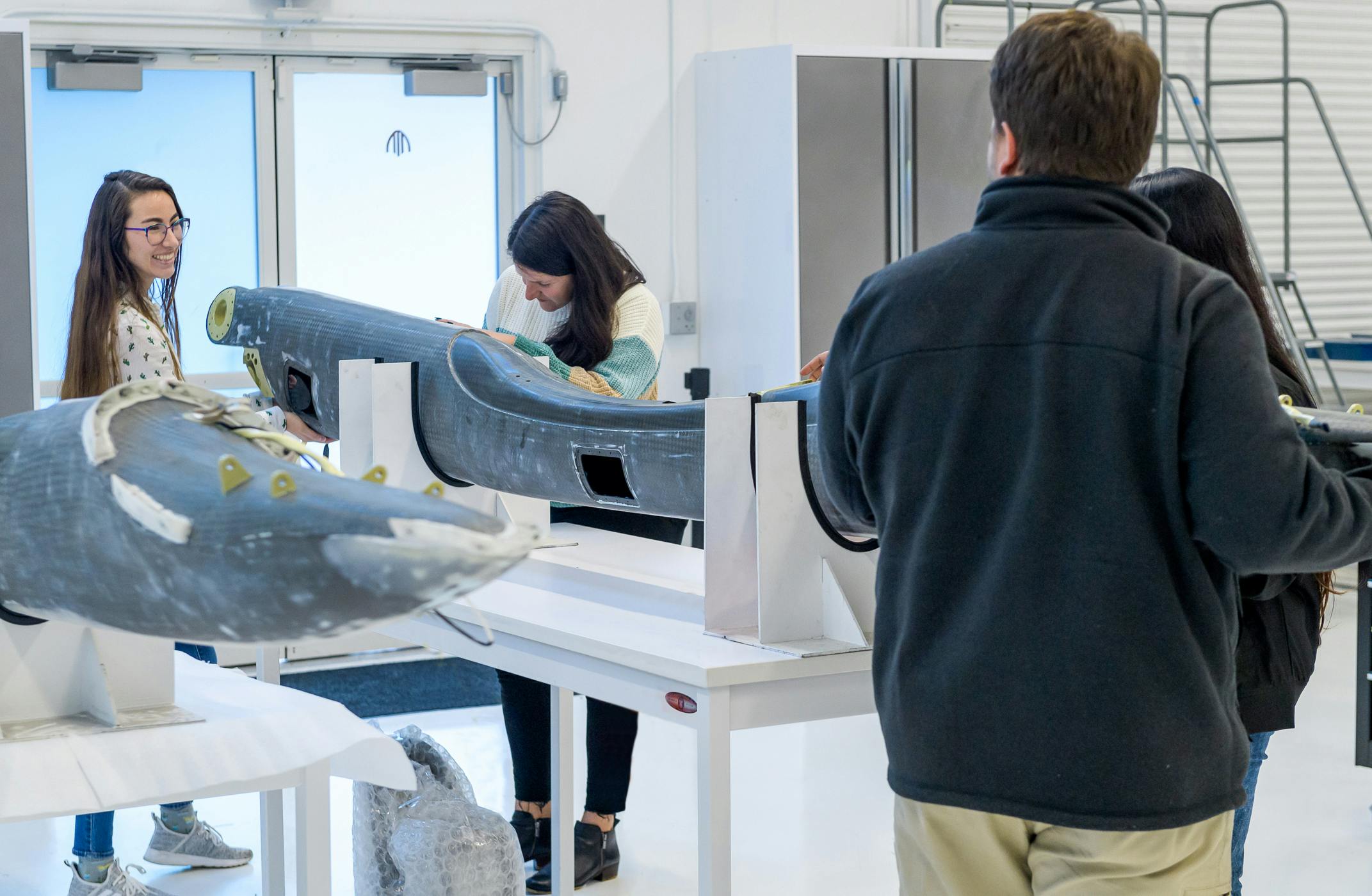
Electric flight comes with a very unique set of requirements and considerations. The weight of an eVTOL aircraft is critical to its performance and viability. Put simply, if the aircraft weight increases then parts such as batteries, motors, structure, and more need to increase in weight to maintain the same payload and performance. In fact, every pound of weight added leads to another three pounds of weight on the final product. In order to achieve our target payload of one pilot plus four passengers, every pound matters.
One of the largest contributors to weight on our aircraft is the aircraft structure itself, often called the airframe. The airframe makes up roughly 25% of the total weight of the aircraft, which means even small design gains can have a large effect. A key driver for the weight of this structure is the materials that are used to make it. Our airframe is made primarily of carbon fiber reinforced plastic (CFRP), often referred to in shorthand as “carbon fiber”.
The material characteristics of carbon fiber are simply unrivaled. Aerospace-quality carbon fiber composites can be up to five times stronger and up to 30% lighter than aluminum. For those focused on shaving weight while ensuring long-term durability and strength, carbon fiber is often the first choice.
But not all carbon fiber composites are created equal. There are many different considerations to keep in mind when selecting the fiber and resin systems: strength, stiffness, manufacturability, operating temperature, cure time, toughness, and cost, to name a few. Certification is also a key consideration. As is the case for all of our engineering at Archer, we’ve approached this design problem and material selection holistically, considering each of these variables and their impact to the product and business. While weight is critical, the manufacturability of the materials is just as important. Selecting materials that are easy to work with helps ensure we’re able to produce safe, high quality parts. Certification is also a key consideration. Thousands of tests are conducted on each material to demonstrate its performance over a range of conditions and scenarios, including what happens when defects are present in the materials. This rigorous testing is called “material qualification” and can take many years for a brand new material system. This is again all in the name of safety and is vital to ensuring that the parts and materials will perform.
After our extensive testing process, Archer chose Hexcel to supply high performance carbon fiber prepreg for our production aircraft. Hexcel is a great partner for us because of their incredibly high performance materials and their best-in-class-quality. The specific materials we chose have outstanding performance characteristics and showed superior manufacturability in our trials. Unlike some other companies, Hexcel manufactures both the carbon fibers and the resin system that are used to bond the composite together (the “plastic” in CFRP). This vertical integration reduces supply chain risk and enables Hexcel to provide competitive pricing, both critical factors as we plan to scale production.
You can read more about our work with Hexcel here.

